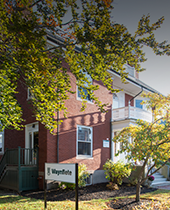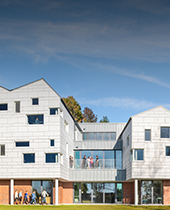Changing the court system to help young offenders
One of the largest and most pressing issues inMaine is the problem of over-incarceration. I believe the solution is criminal justice reform and the reduction of recidivism.
Most people interested in such things have heard of “the revolving door,” symbolizing the perpetual cycle of convicted people through the phases of our flawed justice system: get caught, receive your sentence, do time, leave jail with little support, repeat.
From the very moment the judge pronounces you guilty, your chances of returning to jail or prison within three years increase by a staggering 43 percent, according to a 2011 Pew Charitable Trust survey.
This is simply not an acceptable statistic, and only contributes to other dismal statistics such as prison costs, unemployment and homelessness.
Our judicial system cannot continue as it has while people continue to cycle through jails and prisons.
What do we do? The answer is start early.
At-risk youth are one of the most important targets to address so that, in later years, these young men and women can contribute positively to society, not become another passenger in the revolving door.
Last summer, an organization called Youth Move Maine decided this issue was simply too important to ignore. A grant and two employees later, the Maine Youth Court was born, to directly tackle the enormous issue of how to reduce recidivism and get kids back on the right path.
Youth court is one of the many national initiatives to recognize that, in order to change such a drastic and long-term issue, one must think a little bit outside of the box. We can’t change anything until we change the system, or at least provide an alternative to the standard judicial process.
Additionally, youth court tackles a problem with growing recognition: the harmful practice of suspension or expulsion from school.
If an adolescent has committed a crime, ejecting and isolating this individual from their school community or extracurricular strengths has a backwards effect: It only increases the likelihood that the teen will repeat his or her behavior.
At-risk teens are often faced with myriad problems that require support, whether the issue is family life, substance abuse or peer pressure, and in order to truly address the root of one’s “bad” behavior so that it does not occur again, we have to provide this support and strengthen a youth’s bond with his or her community.
That is exactly what youth court does. Its process involves referrals of first-time high school- or middle schoolaged youths who have committed minor infractions such as possession, vandalism or theft. The youths are diverted — either directly by their schools as an alternative to suspension or expulsion; or by police officers, juvenile community corrections officers or the court — from a traditional punitive process. Youth court procedures also do not appear on a youth’s permanent record.
The most unique aspect of youth court is that it is nearly entirely youth-run. High school volunteers perform as advocates or judges to complete a hearing in which a disposition is decided for the young defendant known as a “respondent.”
The disposition can include anything from letters of apology, mandated weekly time with mom, or playing basketball with the younger members of the Boys and Girls Club. The disposition is created by judges with four fundamental goals:
- repair the harm done by the crime;
- build knowledge, skills and resources for the respondent;
- create connections for the youth in his or her community and family; and build strengths by customizing the disposition according to interests or strengths.
The respondent is given three months to complete his or her disposition; incompletion could result in a return to the court, the school or wherever the first alley of punishment was.
The purpose of youth court is to provide an environment where youths are truly given a voice, and to create an alternative plan to a punitive sentence which focuses on education and fostering stronger relationships and values.
I have been a youth court volunteer since December 2012.
I must confess that, initially, I was not a believer.
And that is one of the major issues with creating true change in the criminal justice system. This nation has become so universally accustomed to the status quo that many have come to accept the revolving door not as a clear indicator of a major error in our system, but as “just the way it is.”
Working with youth court has been eye-opening. Contrary to the cynical voice of 2012 in the back of my mind, the process actually works.
One success story is the case of “Chris,” who was caught for possession and use of marijuana on school property. His high school awarded him “student of the semester” before his youth court disposition had even been completed.
No, youth court is not Maine’s silver bullet, but without these grassroots movements contributing town by town, county by county, how are we ever going to see true change?
If you aren’t quite a believer yet, you can read more about the program and the upcoming training for it in the Bath- Brunswick area at www.midcoastcasa.org.
SOPHIE RAFFEL is a student at the Waynflete School, an intern with the American Civil Liberties Union and a volunteer for the Maine Youth Court.


